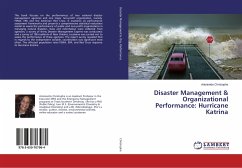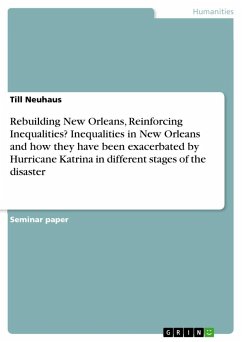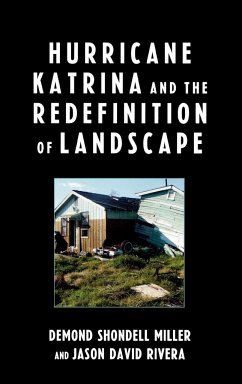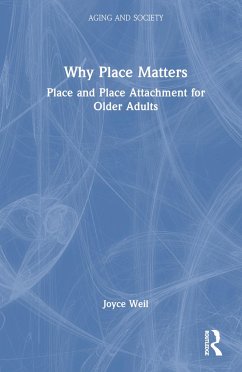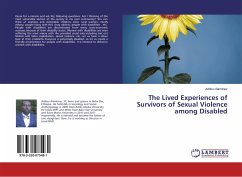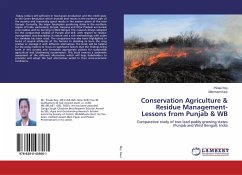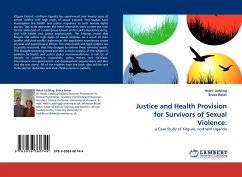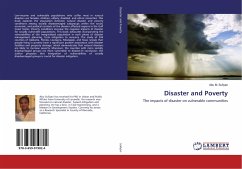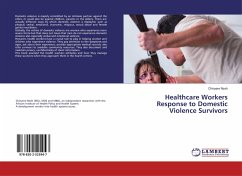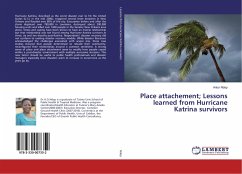
Place attachement; Lessons learned from Hurricane Katrina survivors
Versandkostenfrei!
Versandfertig in 6-10 Tagen
25,99 €
inkl. MwSt.

PAYBACK Punkte
13 °P sammeln!
Hurricane Katrina, described as the worst disaster ever to hit the United States (U.S.) in the mid 2000s, triggered several levee breaches in New Orleans and flooded over 80% of the city. Evacuation before and after the storm displaced over 780,000 in Louisiana, destroyed about 200,000 housing units and killed over 1600 people in the Greater New Orleans area alone. Stress and coping have been shown to have an inverse relationship but that relationship was not found among Hurricane Katrina survivors at three, six and ten months post-Katrina. Respondents' disaster recovery did not conform to exi...
Hurricane Katrina, described as the worst disaster ever to hit the United States (U.S.) in the mid 2000s, triggered several levee breaches in New Orleans and flooded over 80% of the city. Evacuation before and after the storm displaced over 780,000 in Louisiana, destroyed about 200,000 housing units and killed over 1600 people in the Greater New Orleans area alone. Stress and coping have been shown to have an inverse relationship but that relationship was not found among Hurricane Katrina survivors at three, six and ten months post-Katrina. Respondents' disaster recovery did not conform to existing disaster recovery models. While disaster literature acknowledged the challenges associated with severe loss, these case studies showed that people determined to rebuild their community, reconfigured their relationships around a common sentiment. A strong sense of place and place attachment seem to modify how people coped within a post-disaster environment with multiple successive stressors. This new factor should be useful to public health professionals and disaster managers especially since disasters seem to increase in occurrence as the years go by.



